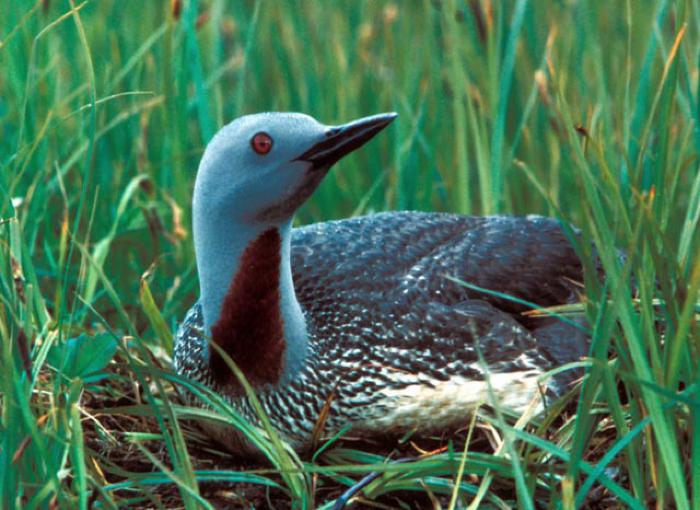Loon — Uyaqurtuliq, Tuullek

Alaska is home to all five of the world’s species of loons (Gavia spp.). Three of these species—the common loon, the red-throated loon, and the Pacific loon—are frequent visitors to Kodiak. This can make it difficult to differentiate between types of loons. Although each species has distinctive plumage in the summer, all loons fade to a similar plumage in the winter, sporting a dark brown back and a white breast. Loons are large diving birds with webbed feet and sharply pointed bills. They feed mostly on fish and aquatic plants in shallow waters, both fresh and marine. They have a number of calls but are known for their haunting cry: an eerie, laughing sound.
Loons are considered lucky in the Arctic, where they are admired for their speed and sharp vision. To foster these qualities in their children, Alaska Natives often placed newborn babies on loon skins. A Chugach Alutiiq legend illustrates this tie to keen vision and explains how the loon got its white breast. A blind boy sitting by a lake heard a loon’s call. The boy shouted to the loon to approach him. When the bird arrived, the boy asked him to restore his eyesight. The loon agreed and took the boy for a ride on his back, diving under the water and circling the lake five times. When they surfaced, the boy could see again. To thank the loon, the boy returned to the lake with an apron of white dentalium shells: a gift that gave the bird its white breast.
